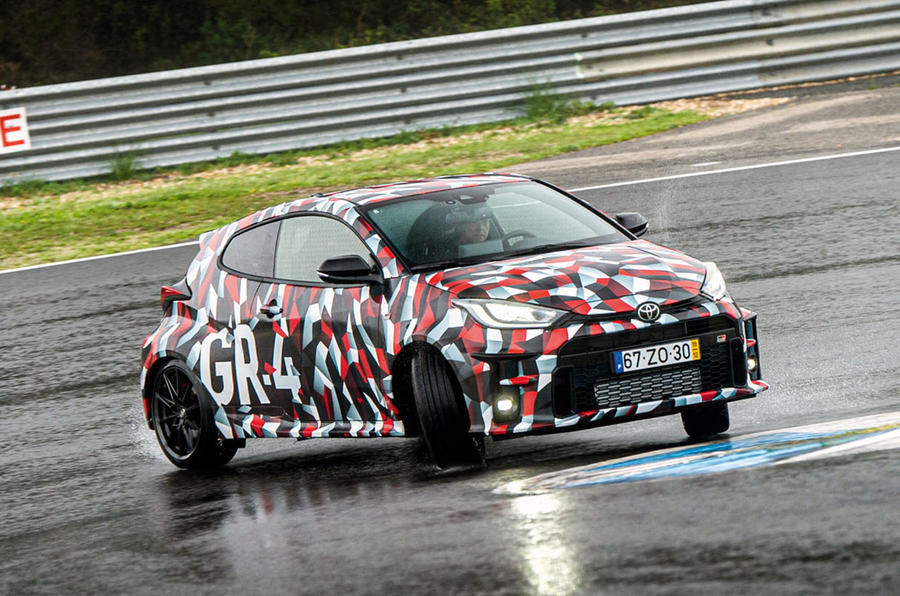What, exactly, is the Toyota GR Yaris? That’s hard to explain, because it’s rarely what you expect it to be.
Let's start with the obvious: it looks a bit like a Yaris, but it’s not really a Yaris.
It’s a preview of Toyota’s next World Rally Car, except that it’s not a homologation special in the traditional sense. It’s a Ford Fiesta-sized pocket rocket, but with underpinnings more in common with larger hot hatches such as the Honda Civic Type R. It feels a sort of successor to the Yaris GRMN, but its production run will be a lot bigger, moving into five figures. Its exaggerated bodywork styling suggests flamboyant excess, but the underlying philosophy is ‘less is more’, with a clear focus on weight saving and efficiency.
Essentially, it’s a lightweight, four-wheel-drive hot hatch designed to perform on road, track and rally stage. Given the development code GR-4, the GR Yaris was due to be shown at the final round of this year's World Rally Championship in Australia, but the event was postponed when the rally was cancelled due to the serious fires in the region.
But it has a greater significance: it’s the first true performance car developed entirely in-house by Toyota for around 20 years. There’s no co-development with Subaru (GT86) or BMW (GR Toyota Supra) here: this is all the work of Toyota’s nascent Gazoo Racing performance division, with input from both Toyota’s motorsport arm and Tommi Mäkinen Racing, which runs the firm’s World Rally Championship programme.
In a time of focusing on efficiency, the significance of Toyota returning to performance cars shouldn’t be lost. And it definitely isn’t on Naohiko Saito, the self-confessed “crazy engineer” who led development of the GR Yaris. You sense Saito can scarcely believe Toyota allowed him to make it. “Dreams do come true,” he says, with infectiously enthusiastic, wide-eyed glee.





























Join the debate
Add your comment
quite an impressive little
quite an impressive little machine, awesome that it is AWD should feel like a proper little WRC car.
Interesting, but it falls between two stools.
Size of a Fiesta ST but priced like a Civic Type R. Both of which feature more practical five door versions.
Apart from being special for a few diehard Japanese performance car fans, I can't see the attraction over these examples of current 'best in class' options.
Lotus?
Very interesting car!
I wonder if this engine could be in a Lotus Elise too :-)